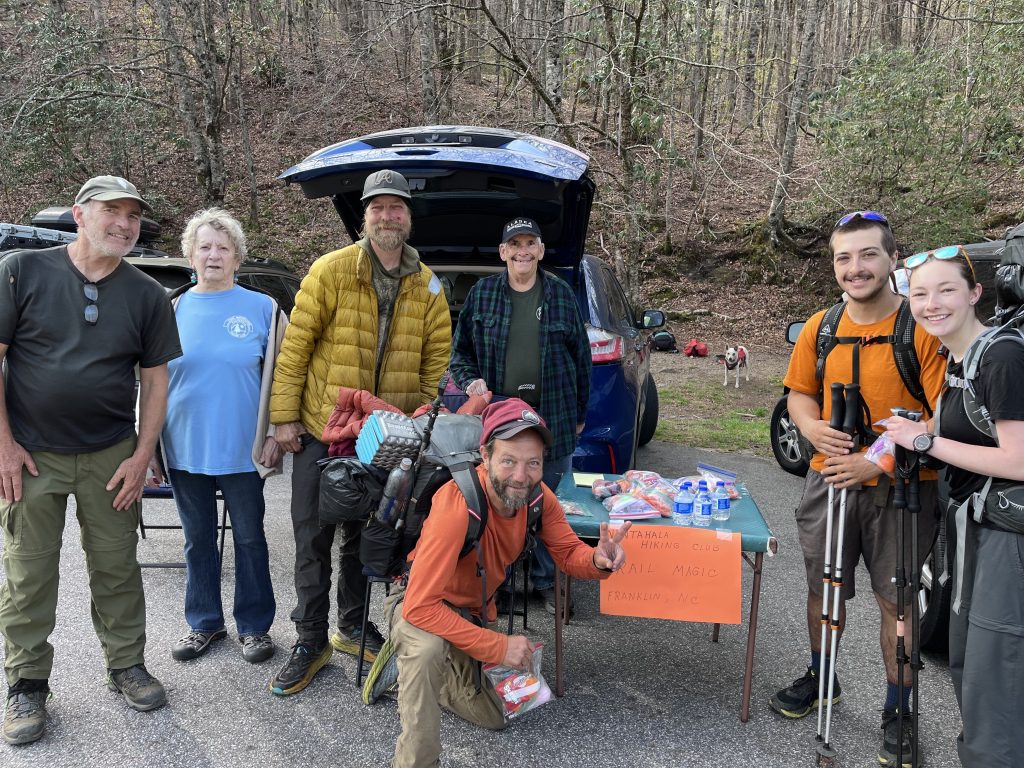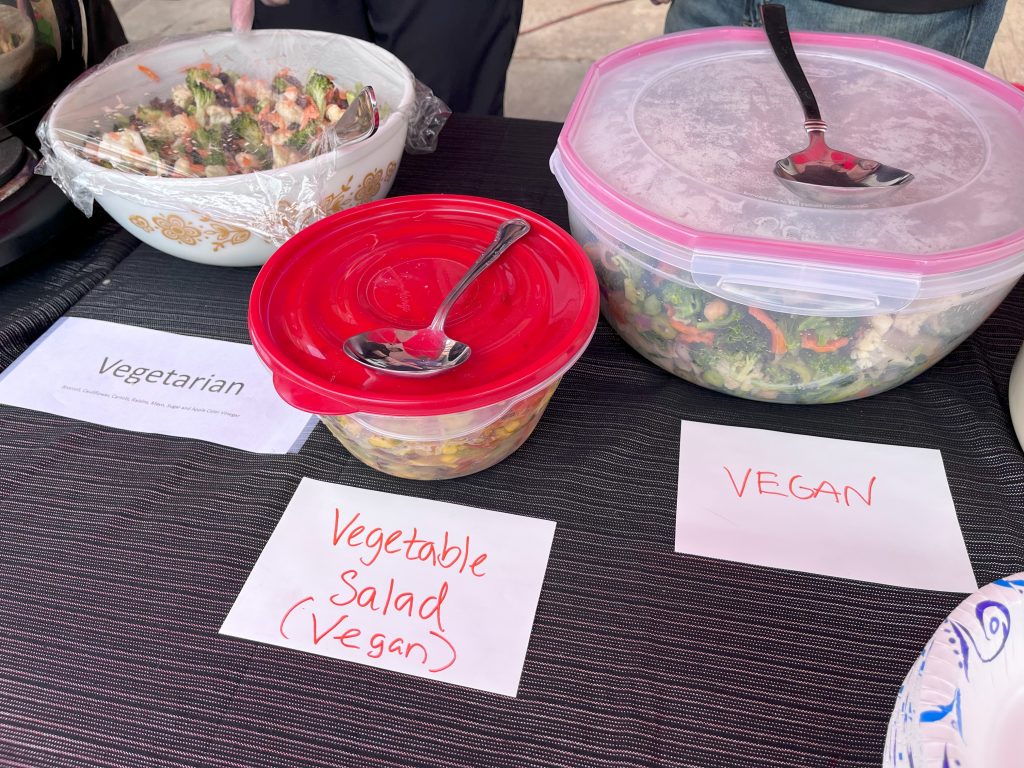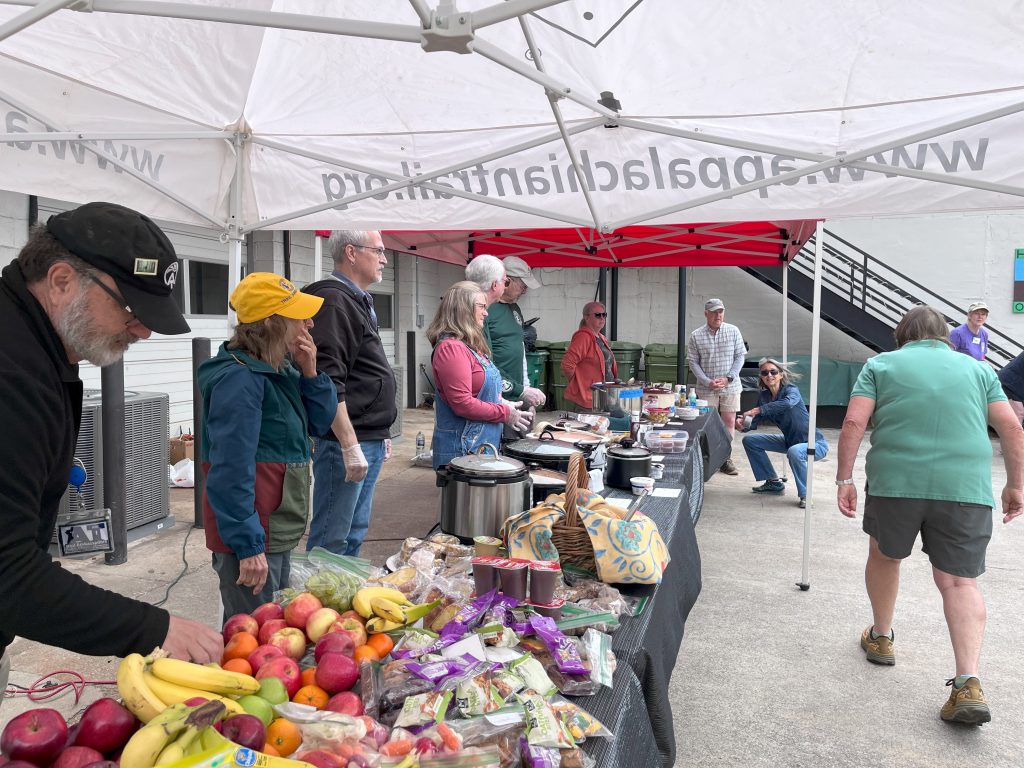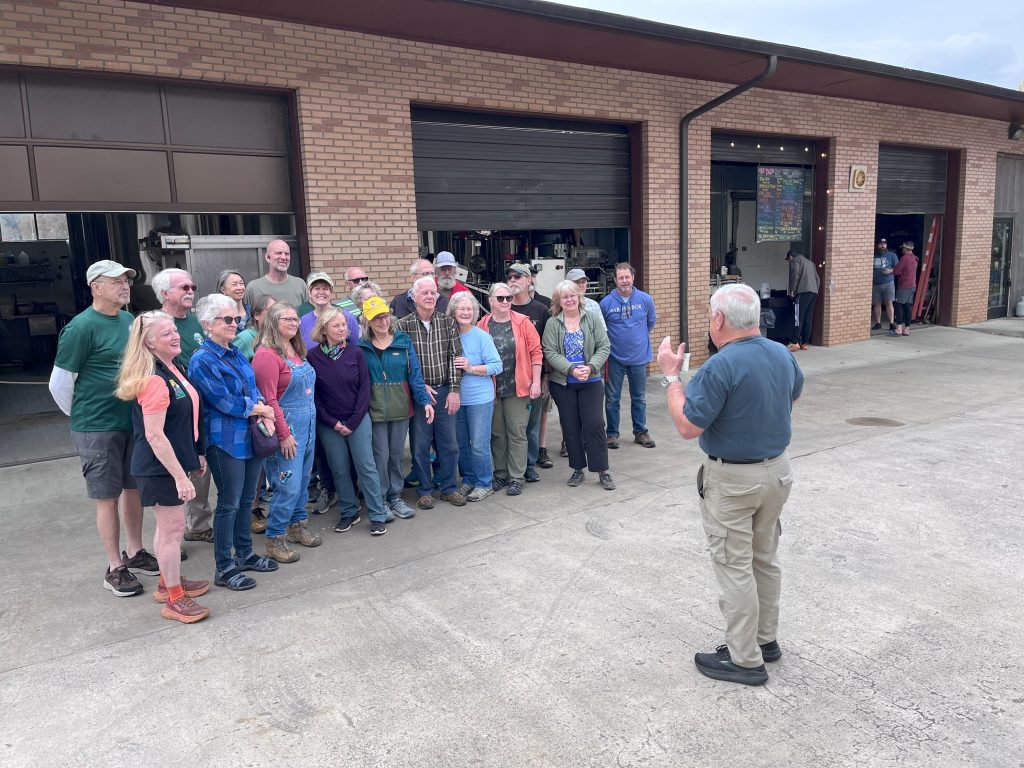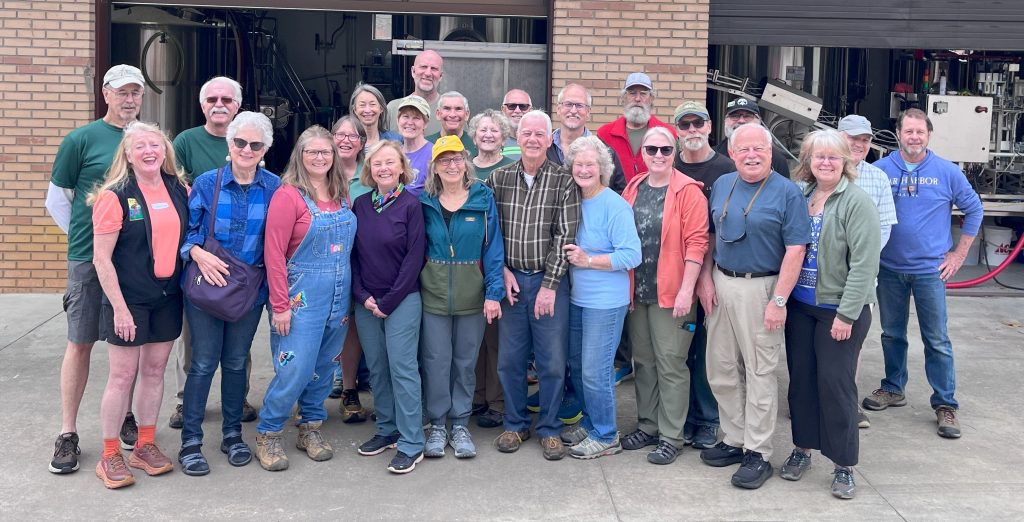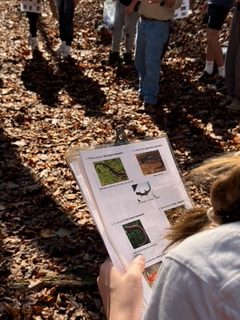
By Philip Werner
July 2025 Newsletter — Read the Full Story
Often perceived as a young person’s activity, hiking is, in reality, accessible to people of all ages and fitness levels. With careful planning, proper preparation, and a mindful approach, hiking can be a rewarding and enjoyable activity for those over 60. It provides a unique opportunity to explore breathtaking landscapes, challenge oneself physically and mentally, and foster a sense of accomplishment. Once you get started, you’ll soon be hooked.
The Benefits of Hiking over 60
The advantages of hiking for individuals over 60 extend far beyond simply getting some fresh air. Regular hiking can significantly contribute to both physical and mental well-being, helping aging hikers maintain their independence and enjoy a higher quality of life.
Physical Health: Hiking is a fantastic cardiovascular workout that strengthens the heart and lungs, improves circulation, and helps lower blood pressure and cholesterol levels. It also strengthens muscles, particularly in the legs, core, and back, improving balance and stability, which are all crucial for preventing falls. The weight-bearing nature of hiking helps maintain bone density, reducing the risk of osteoporosis, a common concern for seniors. Furthermore, hiking can aid in weight management, which is essential for preventing and managing chronic conditions such as diabetes and heart disease.
Mental Health: The benefits of hiking extend beyond the physical realm. Spending time in nature has been proven to reduce stress, anxiety, and depression. The rhythmic motion of walking, combined with the beauty of the natural surroundings, can have a calming and meditative effect, promoting relaxation and mental clarity. Hiking also stimulates the release of endorphins, natural mood boosters that can alleviate pain and improve overall well-being. The sense of accomplishment that comes from completing a hike can boost self-esteem and confidence.

Social Engagement: Hiking can be a solitary pursuit, allowing for introspection and peaceful reflection. However, it can also be a wonderful way to connect with others. Joining a hiking group or inviting friends and family along can provide opportunities for social interaction and companionship, combating feelings of isolation and loneliness. Sharing the experience of exploring a new trail or reaching a scenic vista can create lasting memories and strengthen bonds.
Cognitive Function: Studies have shown that regular physical activity, including hiking, can improve cognitive function and reduce the risk of age-related cognitive decline. Hiking challenges the brain to navigate unfamiliar terrain, remember routes, and make quick decisions, keeping it sharp and engaged.
Connection with Nature: Immersing oneself in nature has a profound impact on overall well-being. The sights, sounds, and smells of the natural world can be incredibly restorative, reducing stress and promoting a sense of peace and tranquility. Hiking provides an opportunity to appreciate the beauty and wonder of the environment, fostering a sense of connection to something larger than oneself.
Planning and Preparation: Setting Yourself Up for Success
Careful planning and preparation are essential for ensuring a safe and enjoyable hiking experience, especially for individuals over 60. Taking the time to consider your physical limitations, choosing appropriate trails, and gathering the necessary gear, will minimize risks and maximize your enjoyment.
Assess Your Fitness Level: Before embarking on any hiking adventure, it’s crucial to assess your current fitness level honestly. Consider any existing health conditions, such as arthritis, heart problems, or respiratory issues, and consult your doctor to determine if hiking is appropriate. Start with short, easy hikes on relatively flat terrain and gradually increase the distance and difficulty as your fitness improves.
Choose the Right Trail: Selecting the right trail is paramount for a successful and enjoyable hike. Look for trails that are well-maintained, clearly marked, and appropriate for your fitness level. Consider the length of the trail, the elevation gain, and the terrain. Avoid trails that are too steep, rocky, or overgrown. Online resources, guidebooks, and local hiking clubs can provide valuable information about trail conditions and difficulty levels.
Check the Weather Forecast: Always check the weather forecast before heading out on a hike. Be prepared for changing weather conditions, especially in mountainous areas. Dress in layers so you can adjust your clothing as needed. Avoid hiking during extreme heat, cold, or inclement weather.
Inform Someone of Your Plans: Before leaving for your hike, always inform someone of your planned route, expected return time, and who to contact in case of an emergency. This is particularly important if you are hiking alone or in more remote areas with poor cell phone access.
Essential Gear and Safety Considerations
Having the right gear and being aware of potential safety hazards are essential for a safe and enjoyable hiking experience.
- Footwear: Proper footwear is arguably the most important piece of hiking gear. Choose hiking boots, hiking shoes, or trail runners that are comfortable, supportive, and provide good traction. Modern hiking footwear is much lighter weight than old-school leather hiking boots and more flexible, so it causes fewer blisters. Try on different types from a retailer like REI (which lets you return used footwear) to see what type suits you best.
- Trekking Poles: Trekking poles are particularly valuable for older hikers because they provide extra stability and support, especially on uneven terrain. They can also help reduce strain on your knees and ankles, especially when hiking downhill.
- Clothing: Dress in layers so you can adjust your clothing as needed. Choose moisture-wicking fabrics that will keep you dry and comfortable. Avoid cotton, which can become heavy and cold when wet and provides less sun protection than synthetic materials.
- Navigation Tools: Always carry a paper map. If you own a GPS or compass or use smartphone hiking apps, bring them too, as they can also be very helpful. If you don’t know how to use them, take a class. They’re essential safety aids, particularly if you hike solo.
- Backpack: A comfortable backpack is essential for carrying your gear. Choose a backpack that is the right size for your needs and that fits properly. A 25-30L backpack is good for day hiking.
- Water and Food: Carry plenty of water to stay hydrated throughout your hike. Dehydration can lead to fatigue, dizziness, and other health problems. Pack nutritious snacks such as trail mix, fruits, and sandwiches to keep your energy levels up.
- Sun Protection: Protect yourself from the sun by wearing sunscreen, a hat, and sunglasses. Sunburn can be painful and increase your risk of skin cancer.
- First-Aid Kit: Carry a basic first-aid kit with essentials such as bandages, antiseptic wipes, pain relievers, and insect repellent.
- Emergency Whistle: An emergency whistle can be used to signal for help if you get lost or injured. You can blow a whistle a lot longer than you can scream for help.
Overcoming Age-Related Challenges
While hiking offers numerous benefits, individuals over 60 may face certain challenges that require careful consideration and adaptation.
Joint Pain and Arthritis: Joint pain and arthritis are common conditions that can make hiking difficult. Using trekking poles can help reduce strain on the joints. Consider wearing supportive braces or splints. They can really help. Choose trails that are relatively flat and avoid those with steep inclines or declines.
Balance Issues: Balance issues can increase the risk of falls. Choose trails that are well-maintained and have good footing. Most hikers, young and old, use trekking poles for added stability.
Reduced Stamina: As we age, our stamina may decrease. Start with shorter hikes and gradually increase the distance and difficulty as your fitness improves. Take frequent breaks to rest and rehydrate.
Vision and Hearing Impairments: Vision and hearing impairments can make it difficult to navigate and be aware of your surroundings. Wear appropriate eyewear and hearing aids. Hike with a friend or family member who can help you navigate and be aware of potential hazards.
Medications: Be aware of any medications you are taking and how they may affect your hiking performance. Some medications can cause dizziness, fatigue, or dehydration. Talk to your doctor about any potential side effects.
Tips for Adapting Your Hiking Routine
As you age, it’s important to adapt your hiking routine to accommodate your changing physical abilities.
Shorten Your Hikes: Reduce the distance and duration of your hikes as needed. Even a short walk in nature can provide significant benefits.
Choose Easier Trails: Opt for trails that are relatively flat and well-maintained. Avoid trails with steep inclines or declines.
Hike at a Slower Pace: Don’t feel pressured to keep up with others. Hike at a comfortable pace, and hike with people who won’t abandon you if you can’t hike as fast as them.
Hike with a Friend: Hiking with a friend can provide companionship and support.
Consider Guided Hikes: Guided hikes can be a great way to learn about the local flora and fauna and to hike safely. When traveling, reach out to local guide services or join a hiking club that has volunteer leaders who lead group hikes.
Conclusion
Hiking over 60 is not only possible but also incredibly beneficial. It’s a fantastic way to stay active, explore the outdoors, and maintain your physical and mental well-being. By following the tips and guidelines outlined in this guide, you can safely and confidently enjoy the many joys of hiking well into your golden years. So, lace up your hiking footwear, grab your backpack, and embark on an adventure that will enrich your life in countless ways. Embrace the challenge, savor the scenery, and discover the rejuvenating power of nature. Your next great adventure awaits!
About the author
Philip Werner is the author of Hiking Over 60: A Modern Guide to Hiking Gear and Techniques for Active Adults (PhilipWerner.com), available in bookstores and online. Aged 65, he’s an avid hiker who’s climbed all 48 of the New Hampshire 4000 footers in every calendar month of the year, also known as “The Grid.” He’s currently a volunteer hiking leader for the Bread Loaf section of Vermont’s Green Mountain Club, and in the past was a 4-season hiking leader for the Appalachian Mountain Club, a trail maintainer for the US Forest Service, a Master Educator for Leave No Trace, and a backpacking guide with Andrew Skurka Adventures.






